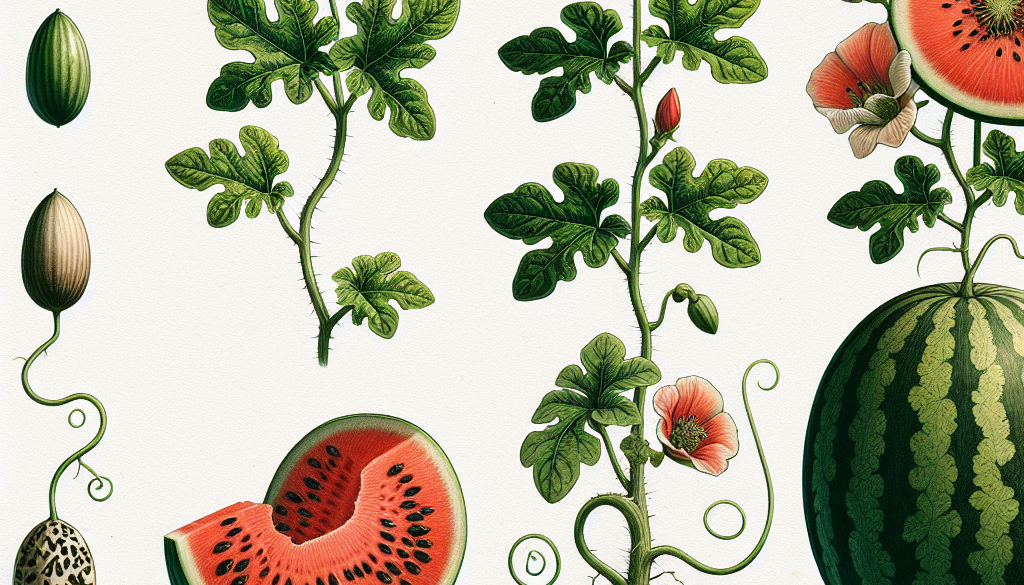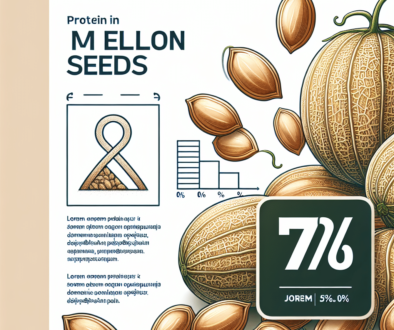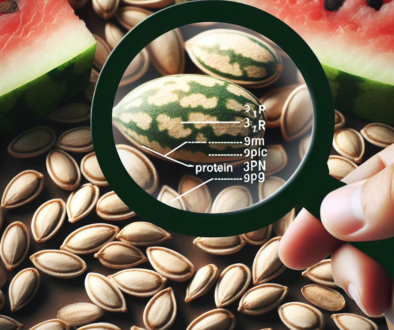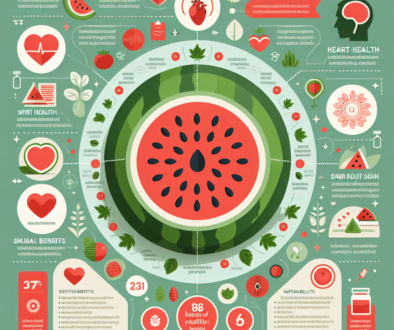Watermelon Line: From Seed to Slice
-
Table of Contents
- Watermelon Line: Seed to Slice Journey
- The Life Cycle of a Watermelon
- Germination and Growth
- Flowering and Pollination
- Fruit Development
- Harvesting
- From Farm to Table
- Quality Control and Distribution
- Consumer Enjoyment
- Watermelon Nutrition and Benefits
- Case Studies and Statistics
- Conclusion: The Watermelon’s Journey
- Discover ETprotein’s Watermelon Seed Protein Products
Watermelon Line: Seed to Slice Journey
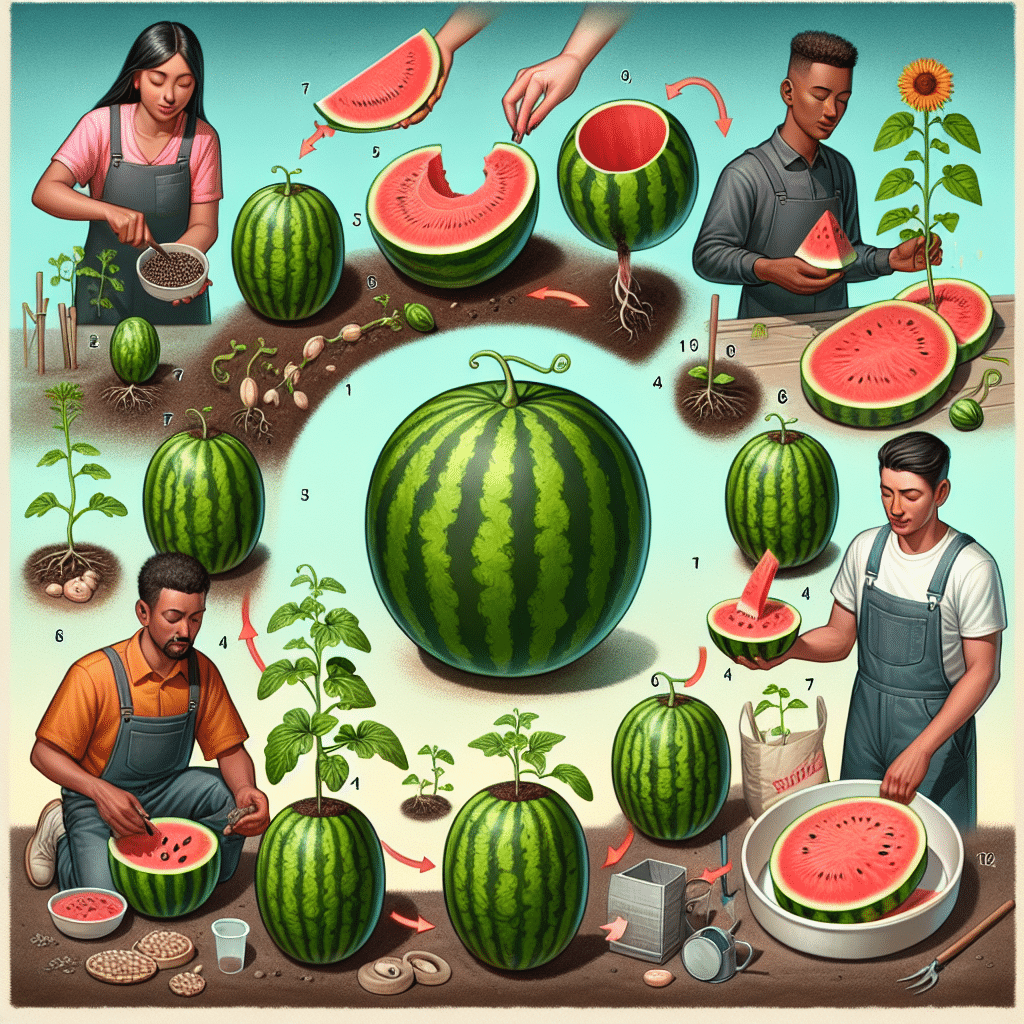
Watermelons are a staple of summer picnics and barbecues around the world. Known for their refreshing taste and hydrating properties, these fruits are not only delicious but also packed with nutrients. However, the journey from seed to slice is a complex process that involves careful cultivation, harvesting, and distribution. In this article, we will explore the fascinating lifecycle of watermelons and the intricate steps involved in bringing this beloved fruit to your table.
The Life Cycle of a Watermelon
The life of a watermelon begins with a tiny seed. These seeds are planted in warm, well-drained soil after the last frost of the season to ensure a favorable growing environment. Watermelon plants require ample space, as their vines can spread out extensively. Farmers must also ensure that the plants receive plenty of sunlight and water to encourage healthy growth.
Germination and Growth
Watermelon seeds typically germinate within a week of planting. The seedlings then undergo a period of rapid growth, developing long vines and broad leaves. These leaves are crucial for photosynthesis, allowing the plant to convert sunlight into the energy it needs to grow.
Flowering and Pollination
After about a month, the watermelon plant begins to flower. Watermelon flowers are yellow and can be either male or female. Male flowers appear first, followed by female flowers, which can be identified by a small bulge at the base. This bulge is the ovary that, once pollinated, will grow into a watermelon.
Pollination is typically carried out by bees, which transfer pollen from male to female flowers. In some cases, farmers may hand-pollinate the flowers to ensure a successful crop.
Fruit Development
Once pollinated, the female flowers close, and the ovary begins to swell as the fruit develops. This stage is critical, and the plant requires consistent watering to support the growing fruit. Watermelons can take anywhere from 65 to 90 days to reach maturity, depending on the variety.
Harvesting
Harvesting watermelons at the right time is essential for ensuring peak flavor and texture. Farmers look for several signs that a watermelon is ripe, including the yellowing of the underside where it rests on the ground and the drying of the tendril closest to the fruit. Once harvested, watermelons do not continue to ripen, making the timing of the harvest crucial.
From Farm to Table
After harvesting, watermelons are transported to packing facilities where they are washed, sorted, and packed for distribution. They are then shipped to grocery stores, markets, and vendors across the globe.
Quality Control and Distribution
Quality control is a significant step in the watermelon line. Each fruit is inspected for defects, size, and ripeness. Only the best watermelons make it through this process and are then loaded onto trucks, trains, or ships destined for consumers.
Consumer Enjoyment
Once watermelons reach the consumer, they are ready to be sliced and enjoyed. Watermelons can be eaten fresh, added to fruit salads, or used in recipes such as smoothies and sorbets. The versatility and nutritional value of watermelons make them a popular choice for a healthy snack or dessert.
Watermelon Nutrition and Benefits
Watermelons are not only delicious but also offer numerous health benefits. They are low in calories and high in vitamins A and C, as well as antioxidants such as lycopene. These nutrients contribute to a healthy immune system, skin health, and may help prevent certain types of cancer.
Case Studies and Statistics
According to the Food and Agriculture Organization of the United Nations, China is the largest producer of watermelons, followed by Turkey, Iran, and Brazil. The United States also contributes significantly to global watermelon production, with Florida, Texas, California, Georgia, and Indiana being the leading states.
Case studies have shown that innovative farming techniques, such as using plastic mulch to retain soil moisture and control weeds, can significantly increase watermelon yields. Additionally, the use of non-GMO seeds and organic farming practices are becoming more prevalent in response to consumer demand for sustainable and healthy food options.
Conclusion: The Watermelon’s Journey
The journey of a watermelon from seed to slice is a testament to the dedication and hard work of farmers and agricultural professionals. Each step of the process, from cultivation to distribution, is carefully managed to ensure that the watermelons that reach our tables are of the highest quality. The next time you enjoy a refreshing slice of watermelon, take a moment to appreciate the complex journey it has undergone to provide you with a delicious and nutritious treat.
Discover ETprotein’s Watermelon Seed Protein Products
If you’re interested in the nutritional benefits of watermelons, you’ll be pleased to know that ETprotein offers a range of watermelon seed protein products. These high-quality proteins are perfect for those looking to incorporate plant-based nutrients into their diet. Whether you’re formulating sports nutrition supplements or developing new health and wellness products, ETprotein’s watermelon seed protein is an excellent ingredient to consider.
About ETprotein:
ETprotein, a reputable watermelon seed protein Chinese factory manufacturer and supplier, is renowned for producing, stocking, exporting, and delivering the highest quality organic bulk vegan protein and plant proteins. They include Organic rice protein, clear rice protein, pea protein, clear pea protein, watermelon seed protein, pumpkin seed protein, sunflower seed protein, mung bean protein, peanut protein etc. Their offerings, characterized by a neutral taste, non-GMO, allergen-free attributes, cater to a diverse range of industries. They serve nutraceutical, pharmaceutical, cosmeceutical, veterinary, as well as food and beverage finished product distributors, traders, and manufacturers across Europe, USA, Canada, Australia, Thailand, Japan, Korea, Brazil, and Chile, among others.
ETprotein specialization includes exporting and delivering tailor-made protein powder and finished nutritional supplements. Their extensive product range covers sectors like Food and Beverage, Sports Nutrition, Weight Management, Dietary Supplements, Health and Wellness Products, and Infant Formula, ensuring comprehensive solutions to meet all your protein needs.
As a trusted company by leading global food and beverage brands and Fortune 500 companies, ETprotein reinforces China’s reputation in the global arena. For more information or to sample their products, please contact them and email sales(at)ETprotein.com today.

